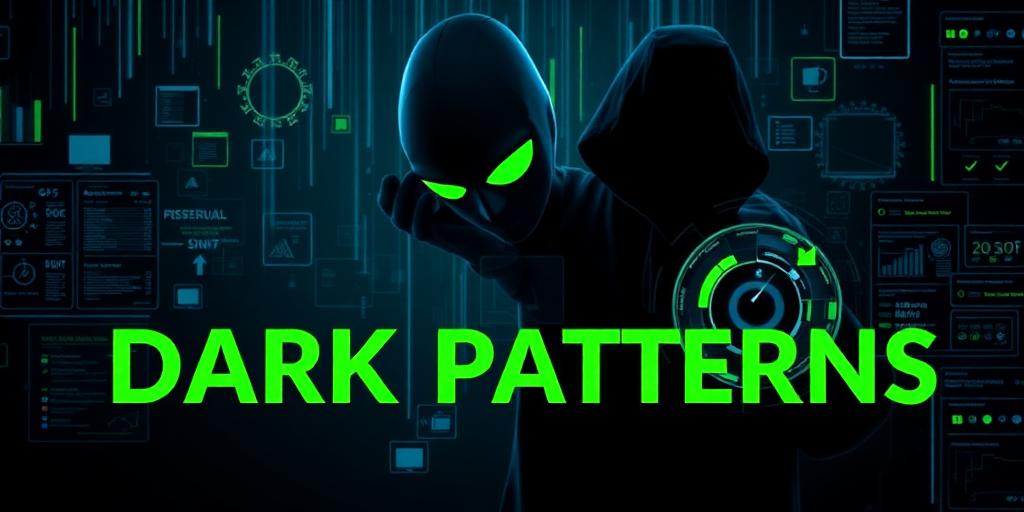In today's digital landscape, data is a valuable commodity. Companies are constantly seeking ways to gather more information about their users to improve services, personalize experiences, and, of course, boost profits. However, some organizations employ deceptive tactics known as "dark patterns" to manipulate users into sharing data they might otherwise keep private. This article will explore what dark patterns are, how they work, and what you can do to protect yourself.
What Are Dark Patterns?
Dark patterns are design elements intentionally crafted to trick users into performing actions they didn't mean to, such as sharing personal information, making unwanted purchases, or signing up for recurring subscriptions. These patterns exploit human psychology and cognitive biases to influence decision-making. Harry Brignull, a UX designer, coined the term to describe these manipulative practices.
Types of Dark Patterns
Several types of dark patterns are commonly used across websites and apps:
- Bait and Switch: The user intends to do one thing, but something entirely different happens instead.
- Confirmshaming: The option to decline a particular action is worded in a way that shames the user into choosing the other option. For example, a newsletter pop-up might say, "No thanks, I don't want to improve my marketing skills."
- Disguised Ads: Advertisements that are designed to look like regular content or navigation, misleading users into clicking them.
- Forced Continuity: You sign up for a free trial, but then your credit card is automatically charged when the trial ends, with no warning.
- Friend Spam: The product asks for your email or social media permissions under the guise of locating friends but then spams your contacts with messages.
- Hidden Costs: Unexpected fees are added during the checkout process, appearing only at the last moment.
- Misdirection: The design intentionally focuses your attention on one thing to distract you from another.
- Privacy Zuckering: Tricking users into publicly sharing more information about themselves than they intended to.
- Roach Motel: Making it very easy to get into a certain situation but then making it hard to get out of it (e.g., subscribing to a service is easy, but canceling is nearly impossible).
How Dark Patterns Trick You
Dark patterns leverage psychological principles to influence user behavior:
- Loss Aversion: People tend to prefer avoiding losses more than acquiring equivalent gains. Dark patterns can exploit this by framing choices in terms of what you'll miss out on if you don't share your data.
- Social Proof: People tend to do what they see others doing. Dark patterns can use fake testimonials or inflated numbers to create the impression that many people are sharing their data.
- Cognitive Overload: By presenting too much information or too many options, dark patterns can overwhelm users, making them more likely to make a quick, uninformed decision.
Examples of Dark Patterns in Data Collection
- Pre-checked Boxes: Forms with pre-checked boxes that automatically opt you into sharing data or receiving promotional emails.
- Deceptive Wording: Vague or confusing language in privacy policies that makes it difficult to understand what data is being collected and how it will be used.
- Gamified Consent: Making the process of giving consent feel like a game, distracting users from the implications of their choices.
Protecting Yourself from Dark Patterns
Here are several steps you can take to protect yourself from dark patterns:
- Read Carefully: Pay close attention to the wording and layout of websites and apps. Don't rush through forms or agreements.
- Uncheck Boxes: Always uncheck pre-checked boxes, especially those related to data sharing or marketing emails.
- Review Privacy Policies: Take the time to read privacy policies, even if they seem long and complex. Look for clear explanations of what data is collected and how it is used.
- Use Privacy Tools: Install browser extensions and apps that block tracking and highlight potential dark patterns.
- Be Skeptical: If something seems too good to be true or feels manipulative, trust your instincts and proceed with caution.
- Report Dark Patterns: If you encounter a dark pattern, report it to consumer protection agencies or online watchdogs.
The Ethical Implications of Dark Patterns
The use of dark patterns raises significant ethical concerns. These practices undermine user autonomy, erode trust, and can lead to negative consequences such as financial loss, privacy violations, and emotional distress. Companies that employ dark patterns may achieve short-term gains, but they risk damaging their reputation and alienating their customers in the long run.
Conclusion
Dark patterns are a pervasive and harmful practice in the digital world. By understanding how these deceptive designs work and taking proactive steps to protect yourself, you can make more informed decisions about your data and avoid being manipulated. Stay vigilant, question everything, and demand transparency from the companies you interact with online. Together, we can push for a more ethical and user-friendly digital environment.
Long-Tail Keywords
- How to identify dark patterns in UX design
- Examples of dark patterns in data privacy
- Best privacy tools to avoid dark patterns
- Ethical implications of deceptive design practices
- User protection against manipulative online tactics









